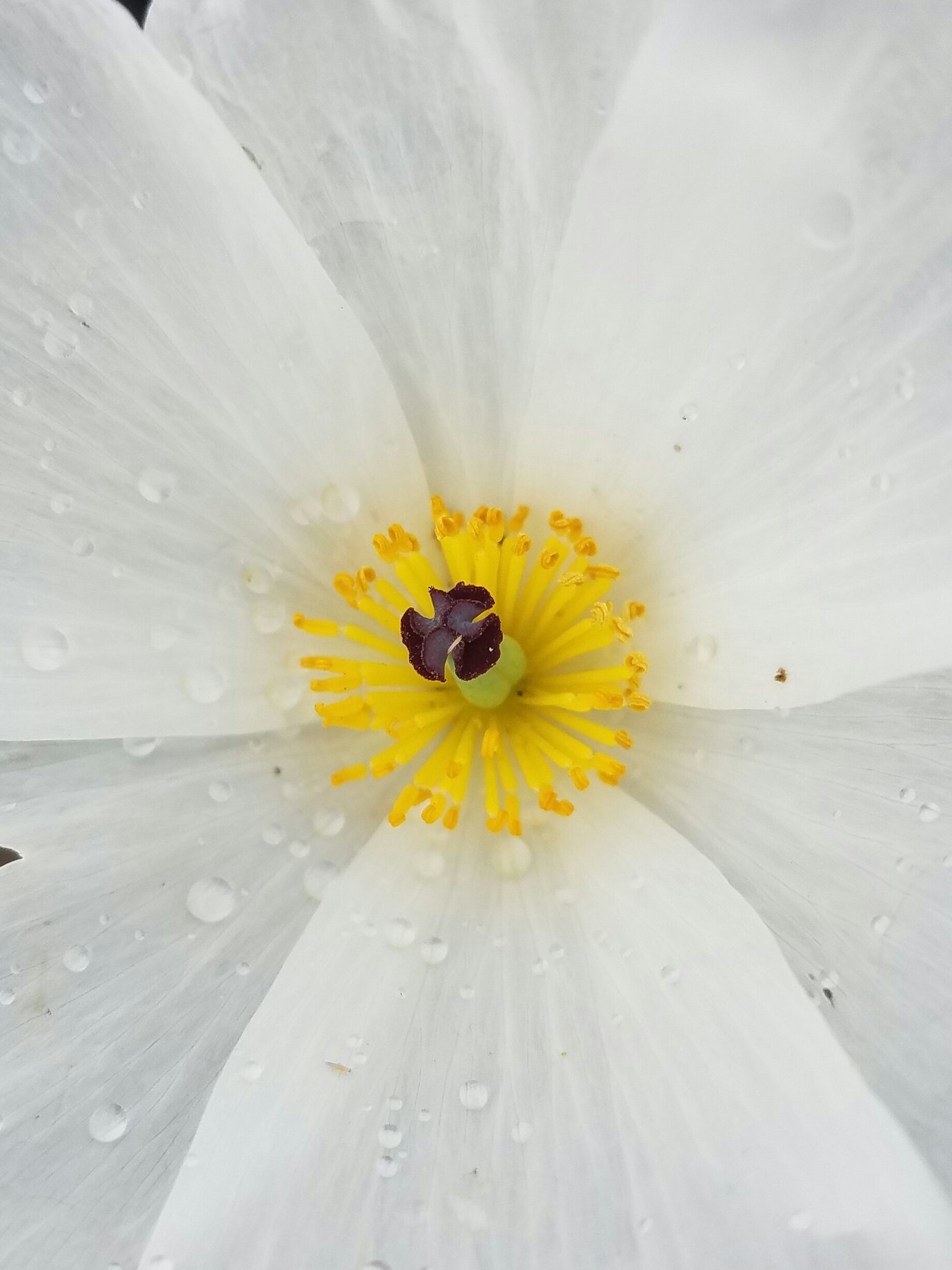Pua kala is a member of the Papaveraceae (Poppy) family. Existing in 2 different varieties, this amazing species has been observed from sea level to over 6200ft elevation on all the main Hawaiian Islands. With its prickly appearance and its ability to grow readily in disturbed areas, this endemic plant has often been mistaken for a “weed”. Pua kala is identified by its glaucous (blueish/gray waxy tint) leaves, showy white flowers, and yellow latex (sap).
Planted in the landscape, this beautiful plant has been known to be used as a specimen plant, or animal deterring hedge. Its acrid taste is unpalatable to cattle (and possibly other grazers), so it has been used by some as a natural border hedge to keep cattle away from their more sensitive plants grown within. Pua kala is wind-resistant and perfect for xeric (drought resistant) landscaping, as it prefers full sun and periodic drying of the roots. Large waterings once or twice a week will benefit this species more than smaller daily waterings.
Traditional uses for pua kala are mainly derived from the use of its yellow latex/sap. It has been known to treat toothaches, nerve pain, and ulcers. Other sources show that pua kala has been used to treat warts as well. Interestingly, the pua kala does not contain any opioids like other members of the poppy family, yet does have some alkaloid properties perfect for the treatments described above.
Resources:


